Available Standards (3315)
Showing standards 3001 - 3200

Standard for the Framework of Distributed Ledger Technology (DLT) Use in Agriculture
This standard provides a common framework for distributed ledger technology (DLT) usage, implementation, and interaction in agriculture.
Standard for the Framework of Distributed Ledger Technology (DLT) Use in Healthcare and the Life and Social Sciences
This standard provides a framework for the implementation, and interaction utilizing Web 3.0 (Web3) in healthcare and life sciences involving privacy challenges.
Standard for the Process of Identifying and Rating the Trustworthiness of News Sources
This standard provides semi-autonomous processes using standards to create and maintain news purveyor ratings for purposes of public awareness.
Standard for the Procurement of Artificial Intelligence and Automated Decision Systems
This standard establishes a uniform set of definitions and a process model for the procurement of Artificial Intelligence (AI) and Automated Decision Systems (ADS) by which government entities can add
Standard for the Reference Architecture of Blockchain as a Service
This standard specifies a reference architecture for Blockchain as a Service (BaaS) in the consortium blockchain.
Standard for the Reference Architecture of Blockchain Fusion Server
This standard defines a technical architecture as well as primary functional and non-functional requirements for blockchain fusion servers.
Standard for the Use of Blockchain in Supply Chain Finance
This standard defines a baseline architectural framework and defines functional roles for blockchain-driven supply chain finance (SCF) implementations, e.g., core enterprise, supplier, bank, blockchai
Standard for Three-Dimensional (3D) Medical Data Management
This standard includes medical 2D and 3D data management such as storage, compression for transfer, regulation for wired or wireless transfer and search engine development for data retrieval.

Standard for Three-Dimensional (3D) Medical Simulation
This standard discusses the simulation of the movement of joints and subsequent changes of skin, muscle, and neighboring structures.

Standard for Three-Dimensional (3D) Medical Visualization
This standard focuses on the demands arising when scientific results in the field of 3D medical visualization are applied for the construction of a software system.

Standard for Transparency of Autonomous Systems
Measurable, testable levels of transparency, so that autonomous systems can be objectively assessed, and levels of compliance determined, are described in this standard.
Standard for Transparent Employer Data Governance
Specific methodologies to help employers in accessing, collecting, storing, utilizing, sharing, and destroying employee data are described in this standard.
Standard for Trusted Data Circulation based on Blockchain and Distributed Ledger Technologies (DLT)
This standard defines a trusted data circulation platform based on blockchain and distributed ledger technologies.
Standard for User Identification and Anti-Money Laundering on Cryptocurrency Exchanges
This standard defines requirements for multiple aspects of user identification and Anti-Money Laundering on cryptocurrency exchanges, such as KYC (Know Your Customer) and AML (Anti-Money Laundering) r
Standard for Using Blockchain for Carbon Trading Applications
Technical framework, application processes and technical requirements for carbon trading applications based on blockchain, including functions, access, interface, security, and carbon consumption vouc
Standard for Using Blockchain in Low Carbon Zones Evaluation
This standard defines an evaluation model and evaluation index system for using blockchain in low carbon zones, combining carbon emission scenarios and zone types.
Standard for Vehicle to Vehicle Communications for Unmanned Aircraft Systems
Vehicle to Vehicle Communications (V2V) standard for Unmanned Aircraft Systems defines the protocol for exchanging information between the vehicles.

Standard for XAI - eXplainable Artificial Intelligence - for Achieving Clarity and Interoperability of AI Systems Design
This standard defines mandatory and optional requirements and constraints that need to be satisfied for an AI method, algorithm, application or system to be recognized as explainable.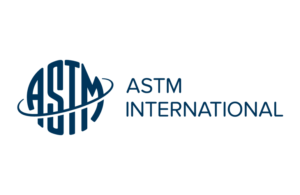
Standard Guide for A-UGV Capabilities
This guide categorizes the autonomous capabilities of an automatic through autonomous-unmanned ground vehicle (A-UGV) based on a list of eleven capability categories.
Standard Guide for Cybersecurity and Cyberattack Mitigation
This guide addresses the company or government organizational need to mitigate the likelihood of cyberattacks and reduce the extent of potential c

Standard Guide for Ensuring the Safety of Connected Consumer Products
This guide provides guidance for connected consumer products, as defined in 1.1.1, as it relates to physical product safety hazards crea

Standard Guide for Laboratory Informatics
This guide helps describe the laboratory informatics landscape and covers issues commonly encountered at all stages in the life cycle of laboratory informatics from incep

Standard Model Process for Addressing Ethical Concerns during System Design
A set of processes by which organizations can include consideration of ethical values throughout the stages of concept exploration and development is established by this standard.
Standard on Architecture for Virtual Reality Disaster Response Training System with Six degrees of Freedom
This standard defines an architecture required to implement a virtual reality system that can simulate responses to possible disasters in physical spaces, where users can actually move around with six
Standard Practice for Describing Stationary Obstacles Utilized within A-UGV Test Methods
This practice specifies physical characteristics that can be used to describe obstacles utilized within ASTM Committee F45 test methods.
Standard Practice for Documenting Environmental Conditions for Utilization with A-UGV Test Methods
This practice provides brief introduction to the following list of environmental conditions that can affect performance of the A-UGV: Lighting, External sensor emission, Temperature, Humidity, Electri
Standard Practice for Implementing Communications Impairments on A-UGV Systems
This practice considers impairments of communications within an automatic, automated, or autonomous unmanned ground vehicle (AUGV) system during task execution.
Standard Practice for Recording the A-UGV Test Configuration
This practice describes a means to record the A-UGV configuration when testing.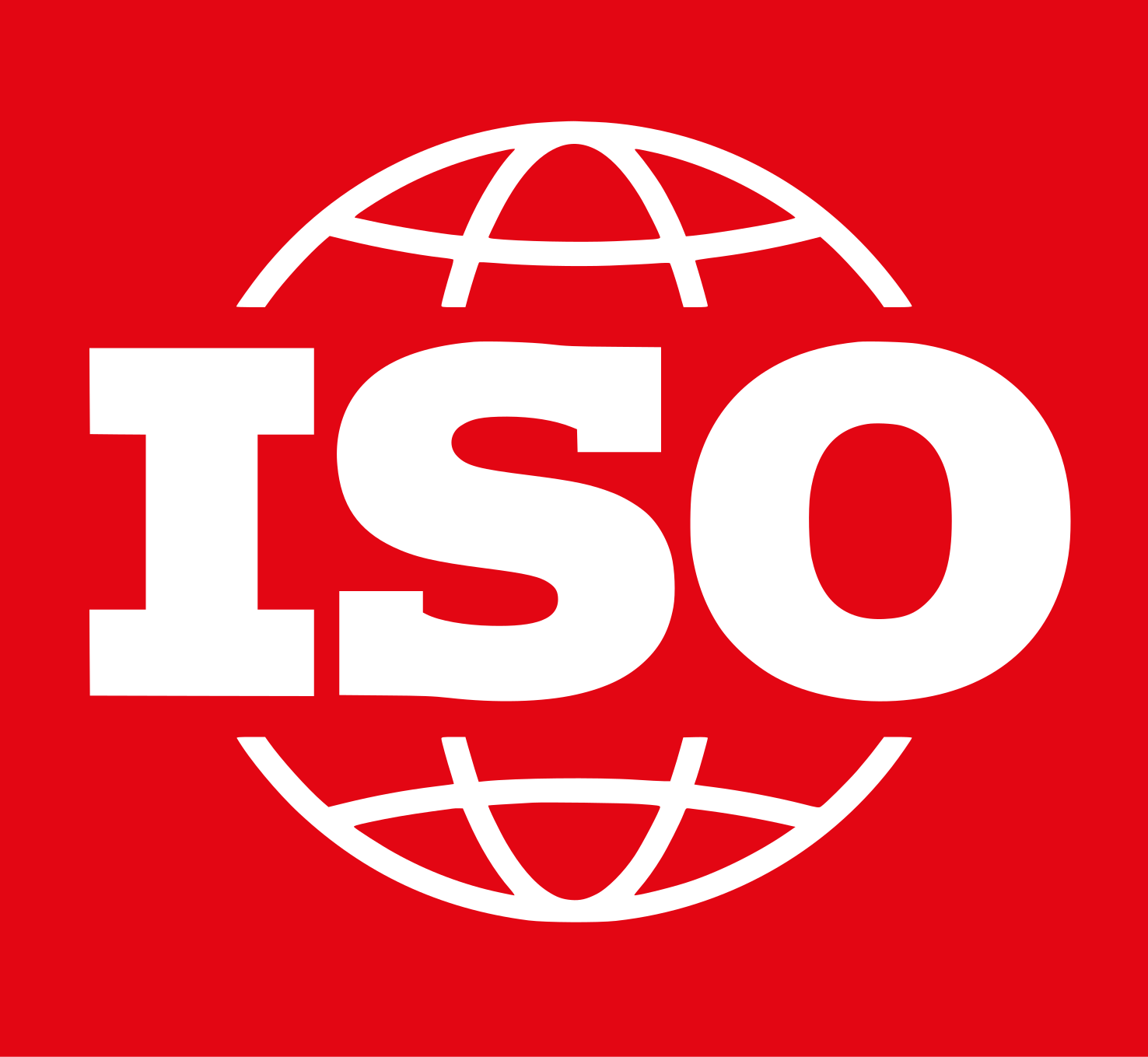
Standard representation of geographic point location by coordinates
This document specifies the representation of latitude and longitude and optionally height or depth compatible with previous editions of ISO 6709.
Standard Terminology for Driverless Automatic Guided Industrial Vehicles
This terminology covers terms associated with unmanned (that is, driverless), ground (that is, land-based and in continuous contact with the ground), industrial vehicles.
Standard Terminology for Human-Robot Interaction
This standard defines terms relevant to human-robot interaction in service, social, education, industrial, and research robotic applications.
Standard Test Method for Confirming the Docking Performance of A-UGVs
This test method defines standard tests that demonstrate and confirm positioning of an A-UGV.
Standard Test Method for Grid-Video Obstacle Measurement
This test method measures an automatic/automated/autonomous-unmanned ground vehicle (A-UGV) kinetic energy reduction when objects appear in the A-UGV path and within the stop-detect range of the vehic
Standard Test Method for Navigation: Defined Area
The purpose of this test method is to evaluate an automatic, automated, or autonomous-unmanned ground vehicle’s (A-UGV) capability of traversing through a defined space with limited A-UGV clearance.
STEP geometry visualization services
This document defines a set of metadata to support the audit trail of the transformation of a geometry definition, while it is distributed and shared in supply-chains, to ensure the traceability of ge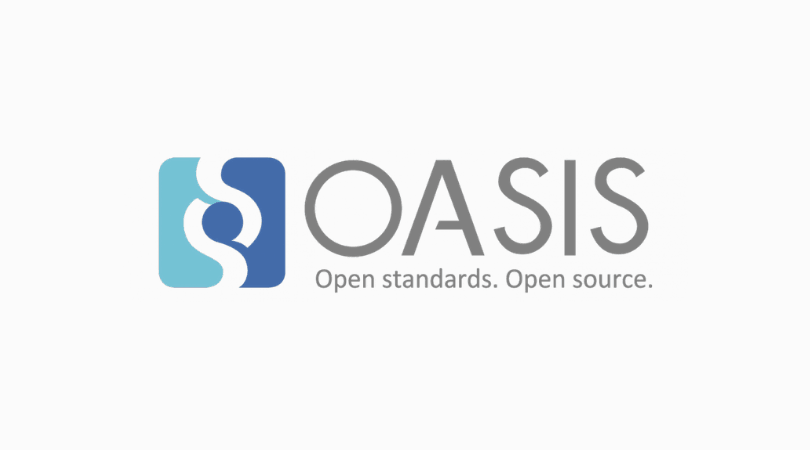
STIX(TM) Version 2.0
The OASIS Cyber Threat Intelligence (CTI) TC was chartered to define a set of information representations and protocols to address the need to model, analyze, and share cyber threat intelligence.
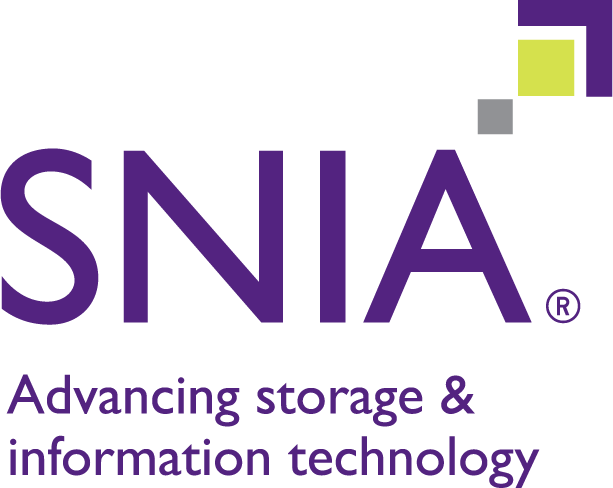
Storage Management Initiative
The Storage Management Initiative Technical Work Group (SMI TWG) is responsible for the maintenance and evolution of the SNIA Storage Management Initiative Specification (SMI-S).
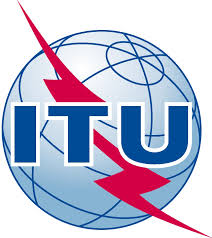
Study Group 11 - Signalling requirements, protocols and test specifications
ITU-T Study Group 11 (SG11) is responsible for 'signalling', producing international standards (ITU-T Recommendations) that define how telephone calls and other calls (such as data calls) are handl

Study Group 16 - Multimedia coding, systems and applications

Study Group 17 - Security
Work to build confidence and security in the use of information and communication technologies (ICTs) continues to intensify in a bid to facilitate more secure network infrastructure, services and
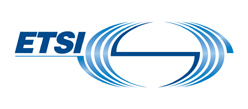
Study of Authorization Architecture for Supporting Heterogeneous Access Control Policies
The present document provides technical solutions for oneM2M authorization architecture, authorization procedures and access control policies.
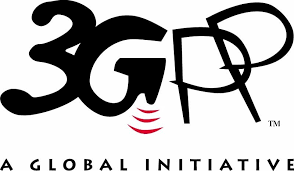
Study of Enablers for Network Automation for 5G (Release 16)
SCOPE: The aim of this Technical Report is to study and specify how to collect data and how to feedback data analytics to the network functions.

Study of Management Capability Enablement Technologies for Consideration
The present document describes and collects the state-of-art of the existing technologies on management capability, evaluates if the technologies can match the requirements defined in oneM2M, analy

Study on new radio access technology: Radio access architecture and interfaces
SCOPE: The present document covers the Radio Access Architecture and Interface aspects of the study item “New Radio Access Technology” [1].

Study on security aspects of Provision of Access to Restricted Local Operator Services by Unauthenticated UEs (PARLOS)
The present document will examine potential security and privacy threat scenarios enabled by PARLOS, evaluate whether solutions need to be found for these and, if required, identify security soluti

Study on the security of the enhancement to the 5G Core (5GC) location services
The scope of the present document is to analyse the security aspects of location service in 5G system and ensure the security solutions are aligned with the work in SA1 (i.e.

Study on the security of the wireless and wireline convergence for the 5G system architecture
The scope of the present document is:

SUBCOMMITTEE ON ROBOTIC ARMS (MANIPULATORS)
Develop and maintain Standards for terminology, performance requirements, and related topics for robotic arms (manipulators).
Suppl on Y. Sup.aisr Artificial Intelligence Standard Roadmap
This supplement provides the standards roadmap for artificial intelligence (AI) in the information technologies.

Supplement on overall aspects of countering mobile messaging spam
Supplement 12 to ITU-T X-series Recommendations, in particular to Recommendation ITU-T X.1240, describes the basic concept and characteristics of mobile messaging spam.

Supplement on usability of network traceback
Supplement 10 to the ITU- X series of Recommendations provides an overview of traceback for responsive measures
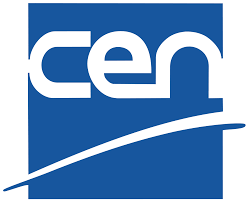
Supplementary grip devices
Preparation of European Standards specifying safety and performance requirements for supplementary grip devices to be mounted on tyres of road vehicles.

Supply chain applications of RFID - Product tagging
This document defines the basic features of RFID for use in the supply chain when applied to Product tagging, Product packaging, Transport units and Returnable transport items (RTIs) and Returnable

Supply chain applications of RFID — Returnable transport items (RTIs) and returnable packaging items (RPIs)
This International Standard defines the basic features of RFID for use in the supply chain when applied to returnable transport items (RTIs). In particular it

Support of 5G glass-type Augmented Reality / Mixed Reality (AR/MR) devices (3GPP TR 26.998 version 17.1.0 Release 17)
The present document collects information on glass-type AR/MR devices in the context of 5G radio and network services.
Sustainability in buildings and civil engineering works - Core rules for environmental product declarations of construction products and services
ISO 21930:2017 provides the principles, specifications and requirements to develop an environmental product declaration (EPD) for construction products and services, construction elements and integ

Sustainability in buildings and civil engineering works - Data templates for the use of environmental product declarations (EPDs) for construction products in building information modelling (BIM) (ISO 22057:2022)
This document provides the principles and requirements to enable environmental and technical data provided in EPDs for construction products and services, construction elements and integrated techn

Sustainability in buildings and civil engineering works - Framework for methods of assessment of the environmental, social and economic performance of construction works as a basis for sustainability assessment - Part 1: Buildings
This document provides a general framework for improving the quality and comparability of methods for assessing the environmental, social and economic performance of construction works, and their c

Sustainability in buildings and civil engineering works - Framework for methods of assessment of the environmental, social and economic performance of construction works as a basis for sustainability assessment - Part 2: Civil engineering works
This document provides a general framework for improving the quality and comparability of methods for assessing the contribution of civil engineering works and their related external works to susta

Sustainability of construction works - Data quality for environmental assessment of products and construction works - Selection and use of data; German and English version prEN 15941:2021
This document supports the data quality assessment and selection of data for product-level Environmental Product Declarations (EPD) according to the core product category rules of EN 15804 and for

Sustainability of construction works - Environmental product declarations - Communication format business-to-business; German and English version prEN 15942:2020
This European Standard is applicable to all construction products and services related to buildings.

Sustainability of construction works - Environmental product declarations - Methodology for selection and use of generic data;
This technical report describes the sources and methodology to be used when preparing generic data for environmental product declarations.
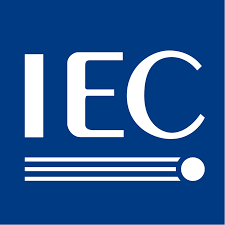
Sustainability, IT & Data Centres
Standardization of assessment methods, design practices, operation and management aspects to support resource efficiency, resilience and environmental sustainability for and by information , data c

Sustainability, IT & Data Centres
Standardization of assessment methods, design practices, operation and management aspects to support resource efficiency, resilience and environmental sustainability for and by information , data c

Sustainable cities and communities
Standardization in the field of Sustainable Cities and Communities will include the development of requirements, frameworks, guidance and supporting techniques and tools related to the achievement

Sustainable cities and communities - Management guidelines of open data for smart cities and communities - Part 1: Overview and general principles
This document provides an overview and general principles, including requirements and recommendations, for open data management for sustainable cities and communities.

Sustainable cities and communities — Descriptive framework for cities and communities
This document specifies a descriptive framework for a city including an associated foundational ontology of the anatomical structure of a city or community.

Sustainable cities and communities — Guidance on establishing smart city operating models for sustainable communities
This document gives guidance for leaders in smart cities and communities (from the public, private and voluntary sectors) on how to develop an open, collaborative, citizen-centric and digitally-ena

Sustainable cities and communities — Indicators for city services and quality of life
This standard defines and establishes methodologies for a set of indicators to steer and measure the performance of city services and quality of life.

Sustainable cities and communities — Indicators for city services and quality of life
This document defines and establishes methodologies for a set of indicators to steer and measure the performance of city services and quality of life.

Sustainable cities and communities — Indicators for resilient cities
This document defines and establishes definitions and methodologies for a set of indicators on resilience in cities.
Sustainable cities and communities — Indicators for resilient cities
This standard defines and establishes definitions and methodologies for a set of indicators on resilience in cities.

Sustainable cities and communities — Indicators for smart cities
As accelerating improvements in city services and quality of life is fundamental to the definition of a smart city ISO 37120 is intended to provide a complete set of indicators to measure progress

Sustainable cities and communities — Indicators for smart cities
This document specifies and establishes definitions and methodologies for a set of indicators for smart cities.

Sustainable cities and communities — Maturity model for smart sustainable communities
This document provides a top-level maturity model for smart sustainable communities (MMSSC), which can be used for self-assessment by individual cities and communities and as the basis for cross-ci

Sustainable cities and communities — Transforming our cities — Guidance for practical local implementation of ISO 37101
This document provides guidance on how to implement and maintain a management system for sustainable development based on ISO 37101 principles, specifically in the context of cities, but applicable

Sustainable cities and communities — Vocabulary
ISO 37100:2016 defines terms relating to sustainable development in communities, smart community infrastructure and related subjects.

Sustainable development in communities — Management system for sustainable development — Requirements with guidance for use
ISO 37101:2016 establishes requirements for a management system for sustainable development in communities, including cities, using a holistic approach, with a view to ensuring consistency with the

Sustainable Digital Multiservice Cities (SDMC): Broadband Deployment and Energy Management: Part 1: Overview, common and generic aspects of societal and technical pillars for sustainability
The goal is to introduce the common and generic aspects of the societal and technical pillars to achieve sustainability objectives behind the deployment of smart new services within the IP network

Sustainable Digital Multiservice Communities: Broadband Deployment and Energy Management: Part 2: Multiservice Networking Infrastructure and Associated Street Furniture
The present document addresses the opportunities and challenges offered by the use of lamp-posts to provide facilities supporting services required by sustainable digital multiservice cities and co

Sustainable Digital Multiservice Communities: Key Performance Indicators for Sustainable Digital Multiservice Areas: Part 2: Global KPIs for Sustainable Digital Multiservice Areas
The present document defines Global Key Performance Indicators (Global KPIs) to describe the social, environmental sustainability and economic attractiveness of Sustainable Digital Multiservice Are

Swordfish Scalable Storage Management API
The Swordfish Scalable Storage Management API ("Swordfish") uses RESTful interface semantics and a standardized

Symbiotic Autonomous Systems: An FDC Initiative
Presents the broad picture on symbioses (Symbiotic Autonomous Systems) in a number of areas and how they impact our economic system and way of life.
System Architecture for the 5G System
SCOPE: The present document defines the Stage 2 system architecture for the 5G System. The 5G System provides data connectivity and services.
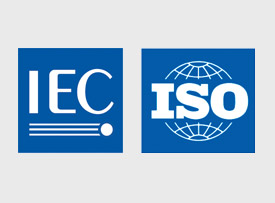
Systems and software engi-neering– Systems and soft-ware Quality Requirements and Evaluation (SQuaRE)– Guide to SQuaRE
La serie ISO/IEC 25000 è stata sviluppata dall'ISO/IEC JTC1 SC7 Work

Systems and software engi-neering– Systems and soft-ware Quality Requirements and Evaluation (SQuaRE)– Measurement of data quality
ISO/IEC 25024:2015 defines data quality measures for quantitatively measuring the data quality in terms of characteristics defined in ISO/IEC 25012.

Systems and Software engineering - Methods and tools for model-based systems and software engineering
This document deals with the tool capabilities and methods for model-based systems and software engineering (MBSSE). This document:
Systems and software engineering - Software life cycle processes
ISO/IEC/IEEE 12207:2017 also provides processes that can be employed for defining, controlling, and improving software life cycle processes within an organization or a project.
Systems to manage terminology, knowledge and content - Concept-related aspects for developing and internationalizing classification systems
ISO 22274:2013 establishes basic principles and requirements for ensuring that classification systems are suitable for worldwide application, considering such aspects as cultural and linguistic div

Tariff and accounting principles and international telecommunication/ICT economic and policy issues
ITU-T SG3 is responsible, inter alia, for studying international telecommunication/ICT policy and economic issues and tariff and accounting matters (including costing principles and methodologies),

TAXII(TM) Version 2.0
The OASIS Cyber Threat Intelligence (CTI) TC was chartered to define a set of information representations and protocols to address the need to model, analyze, and share cyber threat intelligence.

Taxonomy and Definitions for Connected and Automated Vehicles
This standard specifies the taxonomy and definitions for connected and automated vehicles.

Teaching Multiple Robots
The purpose of this technical report is to provide interpretation of certain provisions of ANSI/RIA R15.06-1999 and to present examples of current industry practices for teaching (programming) multipl
Technical Committee (TC) Access, Terminals, Transmission and Multiplexing (ATTM)
We are responsible for the standardization of access, terminals, transmission and multiplexing.

Technical Committee (TC) Broadband Radio Access Networks (BRAN)
We are responsible for the standardization of Broadband Radio Access Networks. ETSI’s Broadband Radio Access Networks committee produces standards and specifications for present and future Bro

Technical Committee (TC) Core Network and Interoperability Testing (INT)
We develop test specifications to test interoperability, conformance, performance and security.

Technical Committee (TC) CYBER (Cybersecurity)
The rapid evolution and growth in the complexity of new systems and networks, coupled with the sophistication of changing threats, present demanding challenges for maintaining the security of Infor

Technical Committee (TC) Digital Enhanced Cordless Telecommunications (DECT)
We are responsible for the development and maintenance of DECTTM standards.

Technical Committee (TC) Electronic Signatures and Infrastructures (ESI)
This activity covers the format of digital signatures, as well as procedures and policies for creation and validation.

Technical Committee (TC) EMC and Radio Spectrum Matters (ERM)
We are responsible for a range of radio product and electromagnetic compatibility (EMC) standards and the overall co-ordination of radio spectrum matters.

Technical Committee (TC) Environmental Engineering (EE)
We are responsible for defining the equipment engineering, the bonding and grounding, the power supply interface and environmental aspects for telecommunication infrastructures and equipment.

Technical Committee (TC) Human Factors (HF)
We deal with issues relating to the ease of use and accessibility for all users. Our work is aimed at empowering industry to deliver successful new ICT products and services.

Technical Committee (TC) Integrated Broadband Cable Telecommunication Networks (CABLE)
We are responsible for the creation, development and maintenance of standards and other ETSI deliverables related to integrated broadband cable telecommunication network technologies including:

Technical Committee (TC) Intelligent Transport Systems (ITS)
We are responsible for standardization to support the development and implementation of Intelligent Transport Systems (ITS) service provision across the network, for transport networks, vehicles an

Technical Committee (TC) Lawful Interception (LI)
We develop standards that support the technical requirements of national and international obligations for law enforcement, including the lawful interception and retention of the communications-rel

Technical Committee (TC) Methods for Testing and Specification (MTS)
We create standards related to testing and specification languages and provide frameworks and methodologies to enable the other ETSI committees to achieve this goal.

Technical Committee (TC) Mobile Standards Group (MSG)
We are responsible for the identification of European regulatory requirements for cellular systems developed by the Third Generation Partnership Project (3GPP™), and for developing Harmonised Stand

Technical Committee (TC) Network Technologies (NTECH)
We are the ETSI competence centre on network technologies in current and future networks, with special focus on network interconnection.

Technical Committee (TC) Network Technologies (NTECH)
We are the ETSI competence centre on network technologies in current and future networks, with special focus on network interconnection.

Technical Committee (TC) Rail Telecommunications (RT)
We are responsible for the development and maintenance of standards related to GSM-R (GSM™ for railways) as well as Next Generation Radio for Rail (NG2R).

Technical Committee (TC) Reconfigurable Radio Systems (RRS)
We are responsible for the standardization of Reconfigurable Radio Systems (RRS), including reconfigurable equipment architecture and Cognitive Radio.

Technical Committee Cloud (TC Cloud)
The goal of TC CLOUD is to address issues associated with the convergence between IT (Information Technology) and Telecommunications.

Technical product documentation (TPD) - General principles of representation - Part 3: Views, sections and cuts
This document specifies the general principles for presenting views, sections and cuts applicable to various kinds of technical drawings (e.g.
Technical product documentation - Digital product definition data practices
This document specifies requirements for the preparation, revision and presentation of digital product definition data, hereafter referred to as data sets, complementing existing standards.
Technical Report - MPAI Metaverse Model (MPAI-MMM) - Functionalities
This document is the first of a planned series of technical documents designed to facilitate interoperability between Metaverse Instances.
Technical Report - MPAI Metaverse Model (MPAI-MMM) - Functionality Profiles
Technical Report - MPAI Metaverse Model - Functionality Profiles is the second of a planned series of technical metaverse interoperability technical documents.
Technical requirements and application of sensor network for wireless gas meters
ISO/IEC TR 30148:2019 describes
– the structure of wireless gas meter networks, and
– the application protocol of wireless gas meter networks.

Technical requirements and application of sensor network for wireless gas meters
ISO/IEC TR 30148:2019 describes
– the structure of wireless gas meter networks, and
– the application protocol of wireless gas meter networks.

Technical requirements and evaluation methods of 3D digital human system based on smart mobile device
This recommendation specifies requirements of 3D digital human system based on smart mobile devices from the dimensions of functional requirements, performance requirements and system requirements acc
Technical security measures for implementation of ITU-T X.805 security dimensions
Many organizations in developing countries as well as developed countries may have difficulties in implementing the high-level dimensions described in Recommendation ITU-T X.805.

Telebiometric authentication framework using biometric hardware security module
In this Recommendation, the expression "Administration" is used for conciseness to indicate both a telecommunication administration and a recognized operating agency.

Telebiometric authentication framework using biometric hardware security module
In this Recommendation, the expression "Administration" is used for conciseness to indicate both a telecommunication administration and a recognized operating agency.

Telebiometric authentication using biosignals
Biometric technology in mobile devices is frequently used in various areas that require a high level of reliability, such as a smart car, e-banking, e-payment, telemedicine and e-healthcare service

Telecommunications and information exchange between systems
Since SC6 was established in 1964, SC6 has worked on standardization in the field of telecommunications dealing with the exchange of information between open systems, including system functions, pr

Telecommunications and information exchange between systems
Since SC6 was established in 1964, SC6 has worked on standardization in the field of telecommunications dealing with the exchange of information between open systems, including system functions, pr
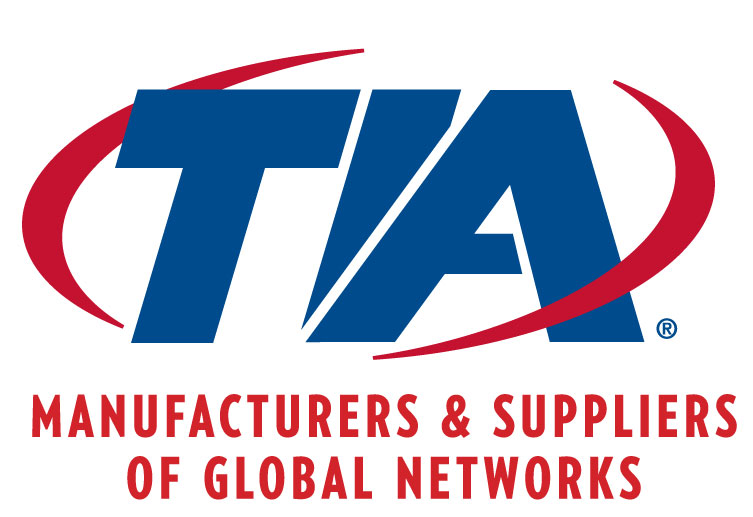
Telecommunications Infrastructure Standard for Data Centers
This Standard specifies the minimum requirements for telecommunications infrastructure of data centers and computer rooms, including single tenant enterprise data centers and multi-tenant data cent

Terrestrial Trunked Radio (TETRA);Testing specification; Part 1: Radio
Methods for testing whether TETRA Voice plus Data (V+D) Base Station (BS) and Mobile Station (MS) equipment and TETRA Direct Mode Operation (DMO) equipment achieve the pe

Test 3D Safety Sensors in Speed and Separation Monitoring Cobot Applications
The purpose of this protocol is to validate suitability of 3D sensors, particularly LiDAR scanners, for improving the skill “Maintain Safe Distance” in advanced Speed and Separation Monitoring (SSM) c
Test correct weight support level
This protocol can be used to validate the weight support level for Weight Support Systems used in the healthcare domain, where the amount of weight support can be varied by a therapist according to th
Test correct weight support Level – using crane
This protocol can be used to validate the weight support level for Weight Support Systems used in the healthcare domain, where the amount of weight support can be varied by a therapist according to th
Test Dynamic stability for Weight support systems
The purpose of this protocol is to test the skill “dynamic stability” of (mobile) weight support systems (with gait following function) type RACA robots* by measurement.
Test Exoskeleton for Limiting Physical Interaction Energy
The specific purpose of this protocol is to validate the safety skill “limit interaction energy” by measurement.
Test exoskeleton for maintaining proper alignment for hinge type joints
This protocol describes a method for validating the safety skill “Maintain proper alignment” for joint axis alignment (both translational as well as rotational) for exoskeleton type rehabilitation rob
Test Exoskeleton for Single Axis Rotation Beyond Pre-Set Limits for Individual Patient Movement
The purpose of the protocol is to validate the safety skill “limit range of movement” for an angular motion of a single joint of an exoskeleton or a restrained-type rehabilitation robot.
Test Gripper for Limiting Physical Interaction Energy
The specific purpose of this protocol is to validate the safety skill “limit interaction energy” by measurement for robotic grippers.
Test GRipper For Limiting Range of Motion
The purpose of this protocol is to validate the safety skill “limit range of movement” for grippers of industrial robots.
Test Limit Restraining Energy for lower limb Exoskeletons
This protocol is to be used to test the restraining energy that can be applied to a human subject during use of an exoskeleton used for gait support using an instrumented limb used in the medical doma
Test Limit Restraining Energy for Upper Limb Exoskeleton Type RACA Robots
This protocol is to be used to test the restraining energy that can be applied to a human subject during use of an exoskeleton used for upper limb support.
Test limitation of vertical Range of Motion (falls prevention)
This protocol can be used to validate the ability of a Weight Support System, used in the healthcare domain, to prevent falls by limiting the Range of Vertical Motion.
Test methods for machine readable travel documents (MRTD) and associated devices
This document provides a set of instructions for evaluation of MRPs which may incorporate contactless integrated circuits.

Test methods for machine readable travel documents (MRTD) and associated devices
This document provides a set of instructions for evaluation of MRPs which may incorporate contactless integrated circuits.

Test Mobile Platform for Collision with Fixed Object (Crush)
The purpose of this protocol is to validate the safety skill “limit interaction energy” by measurement. Its scope is limited to mobile platforms that used in Logistics and Manufacturing applications.
Test Mobile Platform for Dynamic Stability
The purpose of this protocol is to test the skill “dynamic stability” of mobile platforms by measurement. Its scope is limited to mobile platforms used in industrial indoor applications.
Test mobile platform to limit the range of motion
The purpose of this protocol is to validate the skill “limit range of motion” for industrial mobile robots and their payload.
Test Mobile Platform to Maintain a Separation Distance
The purpose of this protocol is to validate the safety skill “maintain safe distance” by measurement. Its scope is limited to Highly Automated Agricultural Machines (HAAM).
Test Mobile Robot Arm for Collision with Fixed Object (Crush)
The purpose of this protocol is to validate the safety skill “limit interaction energy” by measurement.
Test Mobile Robot Arm for Dynamic Stability
The purpose of this protocol is to test the skill dynamic stability of mobile robot arms by measurement. Its scope is limited to robot arms with a mobile base used in industrial indoor applications.
Test mobile robot arm to limit the range of motion
The purpose of this protocol is to validate the skill “limit range of motion” for industrial mobile robots and payload , including a robotic arm mounted on it their .
Test Prevention of Spatial Overreaching for the Subject (Robot in Control)
The purpose of this protocol is to validate the safety skill “limit range of movement” for rehabilitation robots, where a limb of a subject has a connection point with the robot (either free or restra
Test prevention of spatial overreaching for the subject Human in (shared) control testing with optical measurement system
The purpose of this protocol is to validate the safety skill “limit range of movement” for rehabilitation robots, where a limb of a subject has a connection point with the robot (either free or restra
Test prevention of spatial overreaching for the subject –– Human in (shared) control testing with instrumented limb
The purpose of this protocol is to validate the safety skill “limit range of movement” for rehabilitation robots, where a limb of a subject has a connection point with the robot (either free or restra
Test Robot Arm Does Not Overreach Vertical Planes
The purpose of this protocol is to verify the ability of the robotic system to limit its movements in 3D space.
Test Robot Arm for Collision with a Movable Object (measurement of peak pressure)
The specific purpose of this protocol is to validate the safety skill “limit interaction energy” by measurement. Its scope is limited to robot arms operating in the domain Manufacturing.
Test Robot Arm for Collision with a Movable Object (measurement of pressure over time)
The specific purpose of this protocol is to validate the safety skill “limit interaction energy” by measurement. Its scope is limited to robot arms operating in the domain Manufacturing.
Test Robot Arm for Collision with Fixed Object (measurement of peak pressure)
The specific purpose of this protocol is to validate the safety skill “limit interaction energy” by measurement. Its scope is limited to robot arms operating in the domain Manufacturing.
Test Robot Arm for Collision with Fixed Object (measurement of pressure over time)
The specific purpose of this protocol is to validate the safety skill “limit interaction energy” by measurement. Its scope is limited to robot arms operating in the domain Manufacturing.
Test robot to maintain safe distance from the operator in a Hand-Guiding task
The purpose of this protocol is to validate the safety skill “maintain safe distance” for hand-guided robots, eventually equipped with tracking technologies and collision avoidance controllers, where
Test Safety Related Sensor System
The purpose of this protocol is to extend the validation of the skill “Maintain Safe Distance” when complex safetyrelated sensor systems (SRSS) are installed within the workcell, by characterizing th
Test Torque Limitation for a Restraint Type Robotic Device Acting on a Single Human Joint
The purpose of this protocol is to validate the safety skill Limit Restraining Energy for a robotic device acting on a single human joint along one degree of freedom.Testing - Conformance test specifications for core elements for network independent access to emergency services (NG112); Part 1: Protocol Implementation Conformance Statement (PICS), Test Suite Structure and Test Purposes (TSS & TP)
The purpose of a PICS is to identify those standardized functions which an IUT shall support, those which are optional and those which are conditional on the presence of

Testing methods for Speed and Separation Monitoring (SSM) collaborative robot systems
The scope of this Technical Report is to provide test methods and metrics for validating separation distances of robot applications using Speed and Separation Monitoring (SSM) in accordance with ANSI/
Testing methods for the mitigation of non-invasive attack classes against cryptographic modules
This International Standard specifies the non-invasive attack mitigation test metrics for determining conformance to the requirements specified in ISO/IEC 19790 for Security Levels 3 and 4.

Testing methods for the mitigation of non-invasive attack classes against cryptographic modules
This International Standard specifies the non-invasive attack mitigation test metrics for determining conformance to the requirements specified in ISO/IEC 19790 for Security Levels 3 and 4.

The framework and overview of cloud computing interoperability testing
Recommendation ITU-T Q.4040 describes the framework and provides an overview of cloud computing interoperability testing.
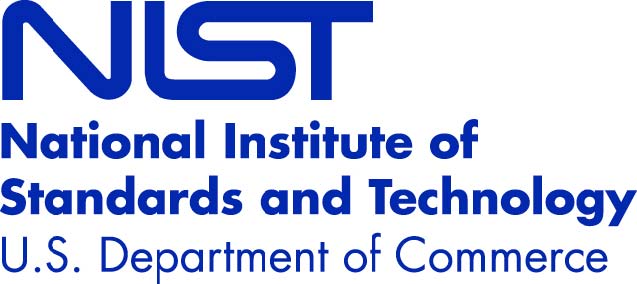
The NIST Cloud Federation Reference Architecture
This document presents the NIST Federated Cloud Reference Architecture model.

Time and Control Code
This Standard specifies a time and control code for use in television and accompanying audio systems operating at nominal rates1 of 60, 59.

Time and Control Code — Amendment 1
The purpose of this amendment is to add support for Progressive video systems with 48 and 48/1.001 Hz frame rates.

Time Code for High Frame Rate Signals and Formatting in the Ancillary Data Space
This standard specifies time code formats with the frame counts 72, 96, 100 and 120 and the frame count 120 with drop-frame compensation.

Time-stamping services -- Part 1: Framework
"This part of ISO/IEC 18014: — identifies the objective of a time-stamping authority; — describes a general model on which time-stamping services are based; — defines time-stamping services; — defi

Time-stamping services -- Part 1: Framework
"This part of ISO/IEC 18014: — identifies the objective of a time-stamping authority; — describes a general model on which time-stamping services are based; — defines time-stamping services; — defi

Time-stamping services -- Part 2: Mechanisms producing independent tokens
This part of ISO/IEC 18014 presents a general framework for the provision of time-stamping services.
Time-stamping services may generate, renew and verify time-stamp tokens.

Time-stamping services -- Part 2: Mechanisms producing independent tokens
This part of ISO/IEC 18014 presents a general framework for the provision of time-stamping services.
Time-stamping services may generate, renew and verify time-stamp tokens.

Time-stamping services -- Part 4: Traceability of time sources
This part of ISO/IEC 18014
— defines the functionality of the time assessment authority (TAA),

Time-stamping services -- Part 4: Traceability of time sources
This part of ISO/IEC 18014
— defines the functionality of the time assessment authority (TAA),
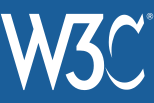
Timed Text Working Group
The mission of the Timed Text Working Group is to develop W3C Recommendations for media online captioning by developing and maintaining new versions of the Timed Text Markup Language (TTML) and Web
TM Forum Best Practice: GB1006 CEM 2025 Guidebook Release 19.0.1
The Customer Experience Framework described in the GB 1006 CEM 2025 Guidebook Releases 19.01 is inspired by the E
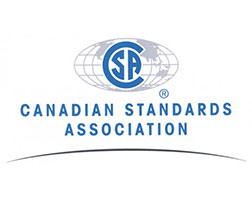
Top Threats
The shift from traditional client/server to service-based models is transforming the way technology departments think about, designing, and delivering computing technology and applications.

Topology and Orchestration Specification for Cloud Applications Version 1.0
Cloud computing can become more valuable if the semi-automatic creation and management of application layer services can be ported across alternative cloud implementation environments so that the s

TOSCA Simple Profile in YAML Version 1.1
This document defines a simplified profile of the TOSCA version 1.0 specification in a YAML rendering which is intended to simplify the authoring of TOSCA service templates.

TOSCA Simple Profile in YAML Version 1.2
The TOSCA Simple Profile in YAML specifies a rendering of TOSCA which aims to provide a more

TOSCA Simple Profile in YAML Version 1.2
The TOSCA Simple Profile in YAML specifies a rendering of TOSCA which aims to provide a more accessible syntax as well as a more concise and incremental expressiveness of the TOSCA DSL in order to

TOSCA Simple Profile in YAML Version 1.3
This document defines a simplified profile of the TOSCA version 1.0 specification in a YAML rendering which is intended to simplify the authoring of TOSCA service templates.
TR 21.914, V14.0.0
This Technical Report provides a summary of work items for 3GPP Release 14, including future development work.
Key focus areas include:
TR 21.915 V0.5.0
After the initial delivery in late 2017 of ‘Non-Stand-Alone’ (NSA) NR (new radio) specifications for 5G, much effort focused in 2018 on timely completion of 3GPP Release 15 – the first full set of
TR 21.916
3GPP Release 16 is a major release in relation to the planned IMT-2020 submission for an initial full 3GPP 5G system to its completion.

TR-42 Telecommunications Cabling Systems
Engineering Committee TR-42 develops and maintains voluntary telecommunications standards for telecommunications cabling infrastructure in user-owned buildings, such as commercial buildings, reside

TR-436 Access & Home Network O&M Automation/Intelligence
As part of Autonomic/Autonomous Networks (ANs) paradigm, the document presents a Framework for intelligent and automated O&M for Access & Home networks, whichincludes: 1) Automatically identif
TR/2020/REC-wot-architecture-20200409Web of Things (WoT) Architecture
The document describes the abstract architecture for the W3C Web of Things.

TR/2020/REC-wot-thing-description-20200409Web of Things (WoT) Thing Description
The document describes a formal model and a common representation for a Web of Things (WoT) Thing Description.

TR/2021/WD-wot-discovery-20210602Web of Things (WoT) Discovery
The document presents a process for WoT discovery with two phases: introduction and exploration.

Transmission of Time Code in the Ancillary Data Space
This standard defines a transmission format for conveyance of linear (LTC) or vertical interval (VITC) time code data formatted according t

Transmission of Time Code in the Ancillary Data Space — Amendment 1
The purpose of this amendment is to add support for Progressive video systems with 48 and 48/1.001 Hz frame rates.
